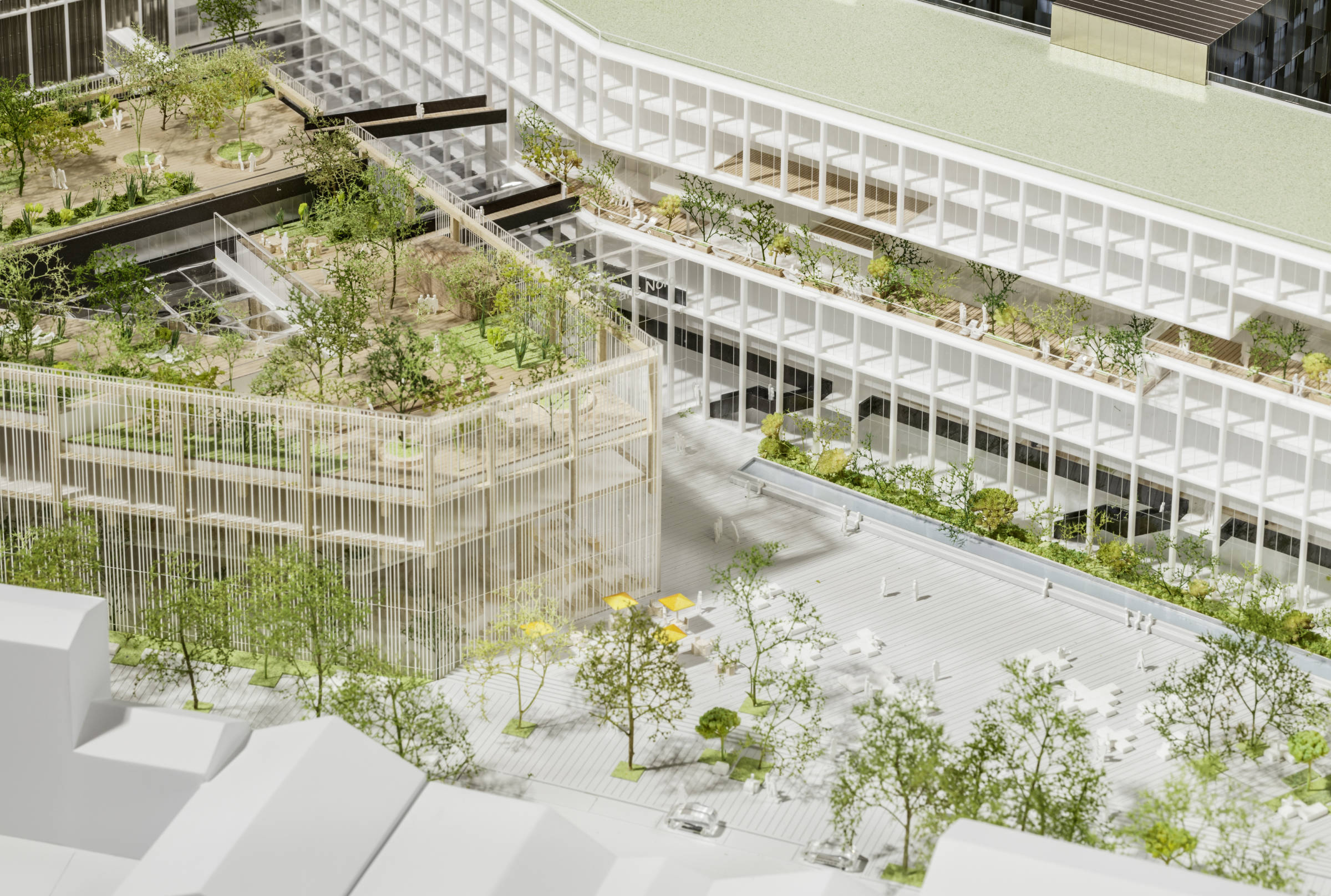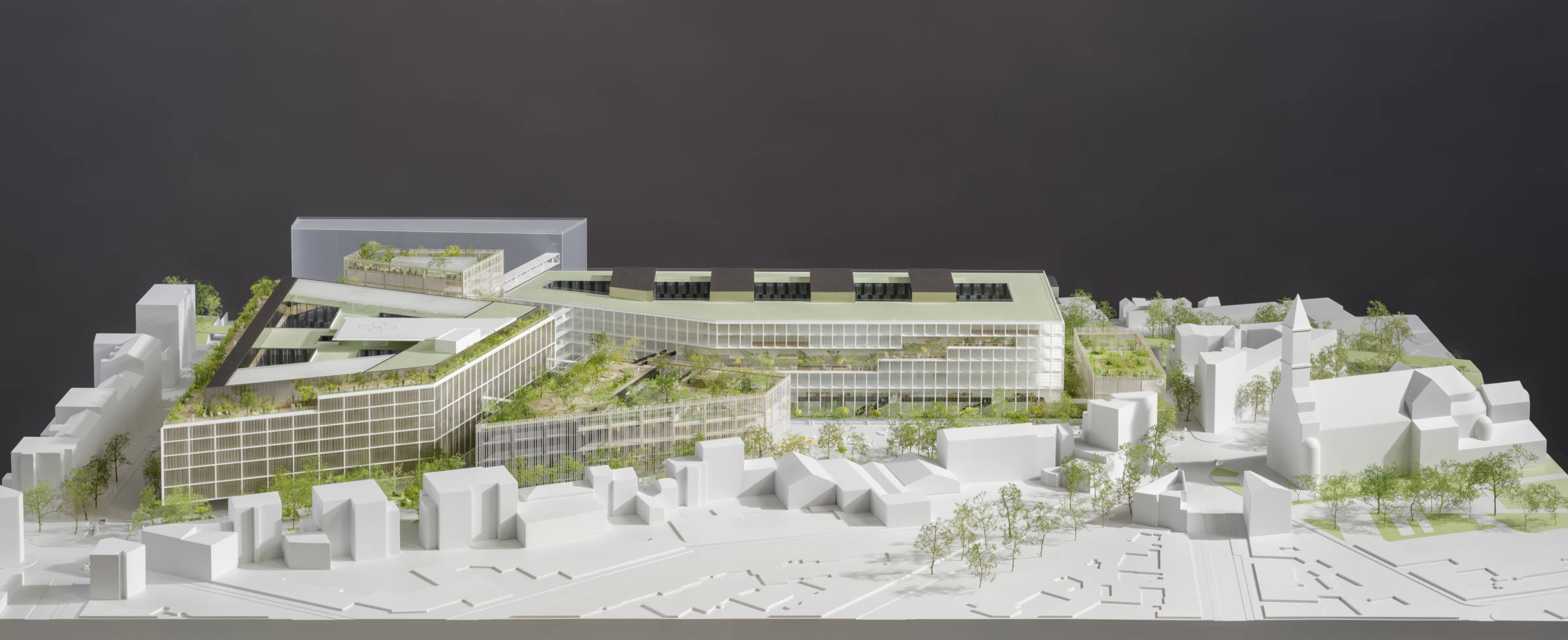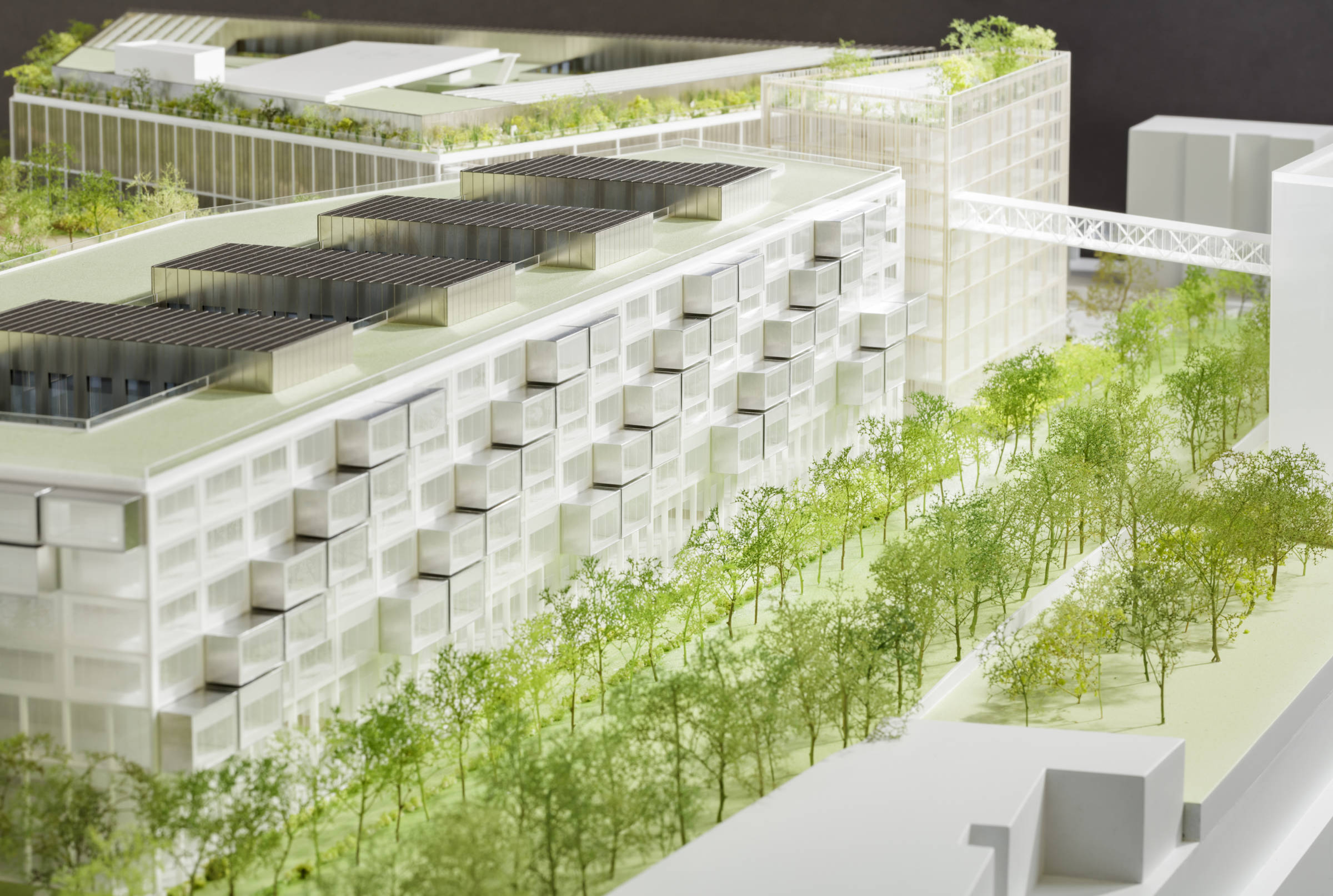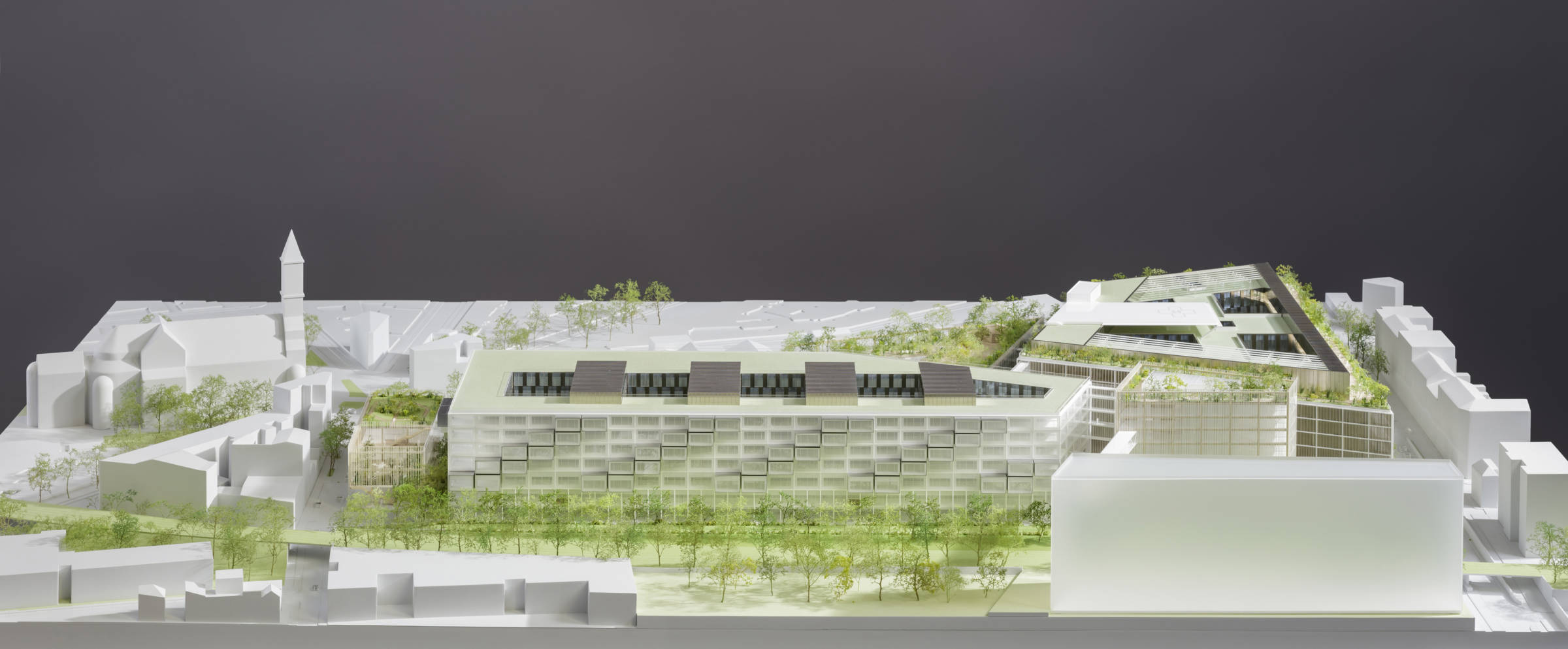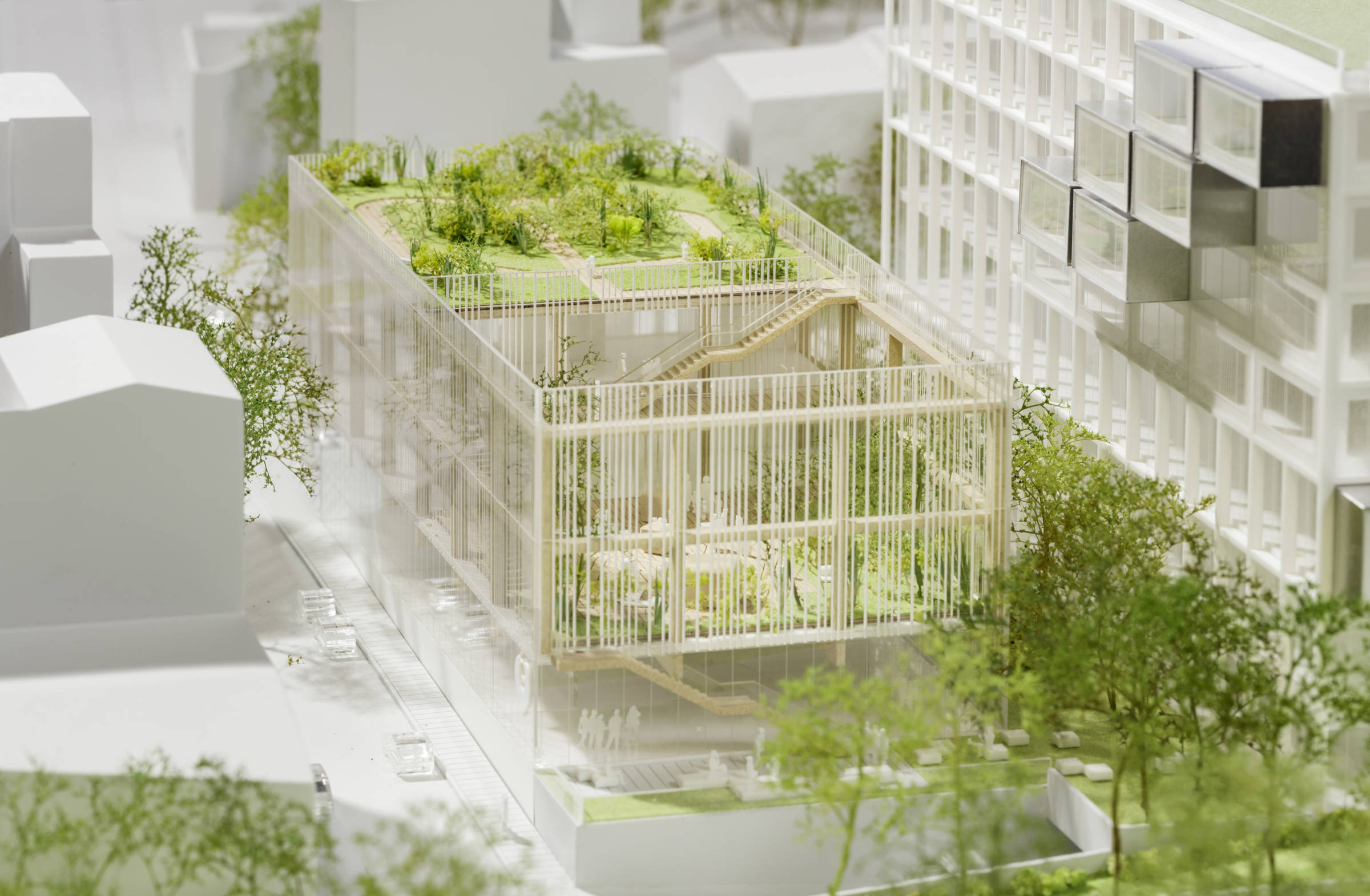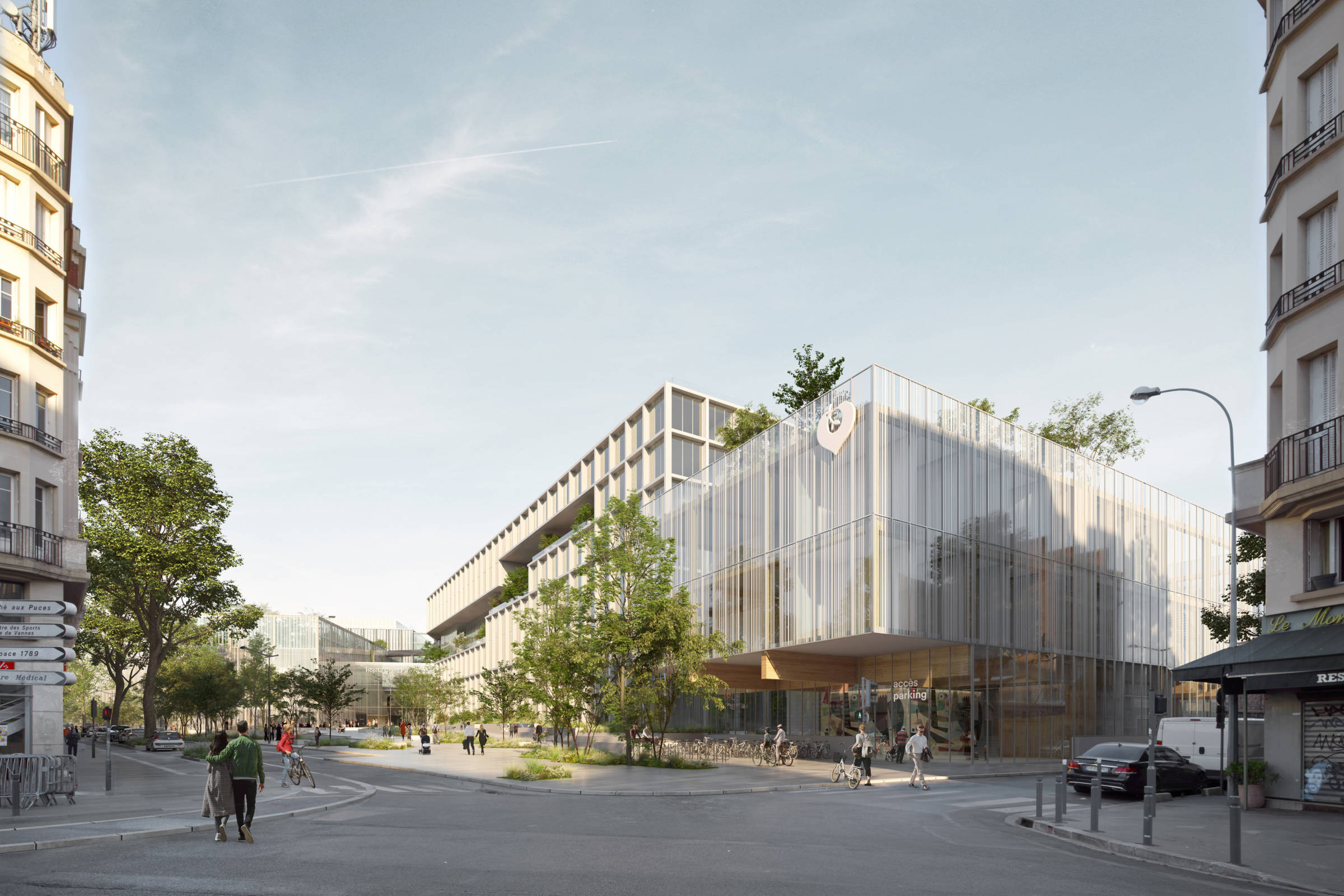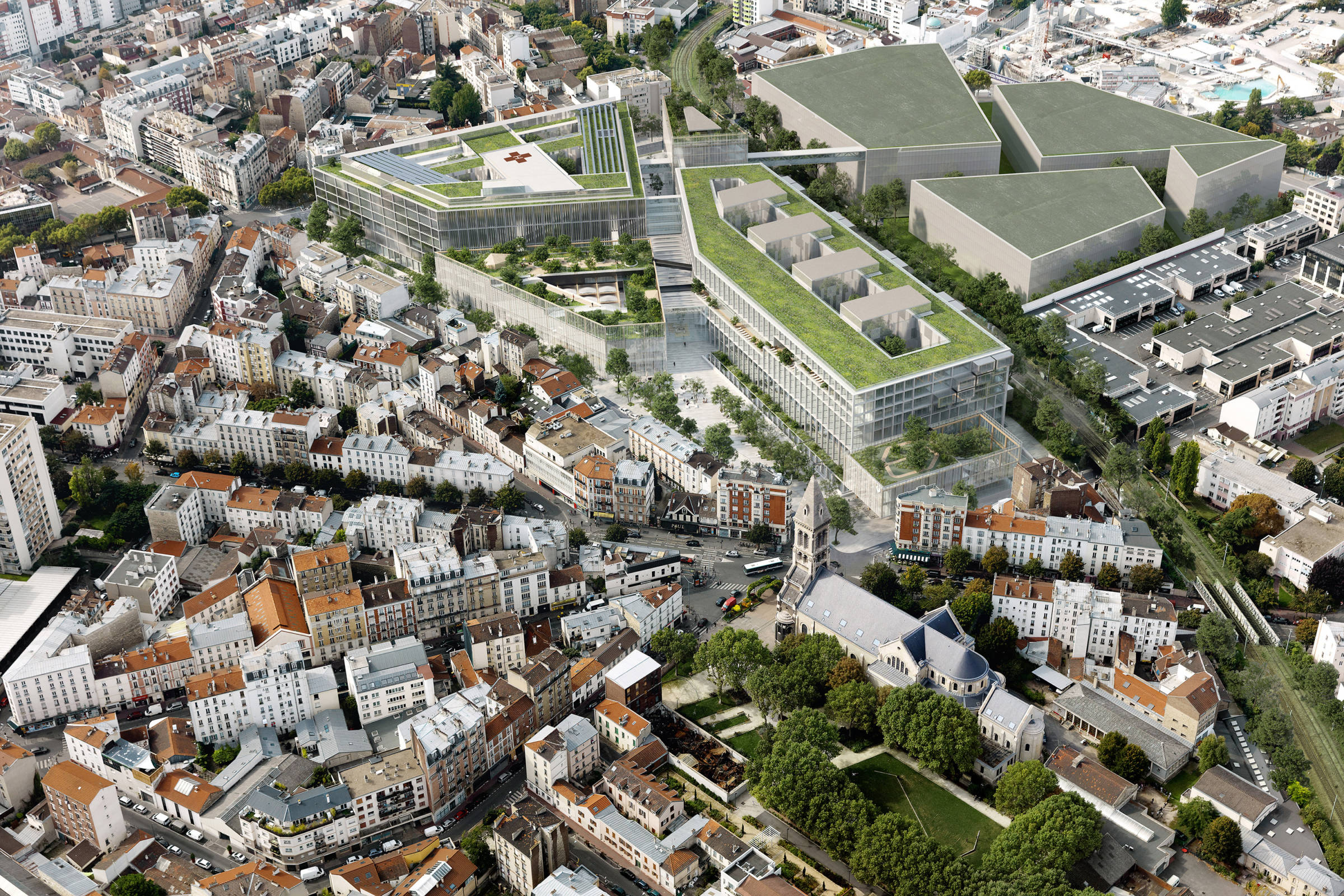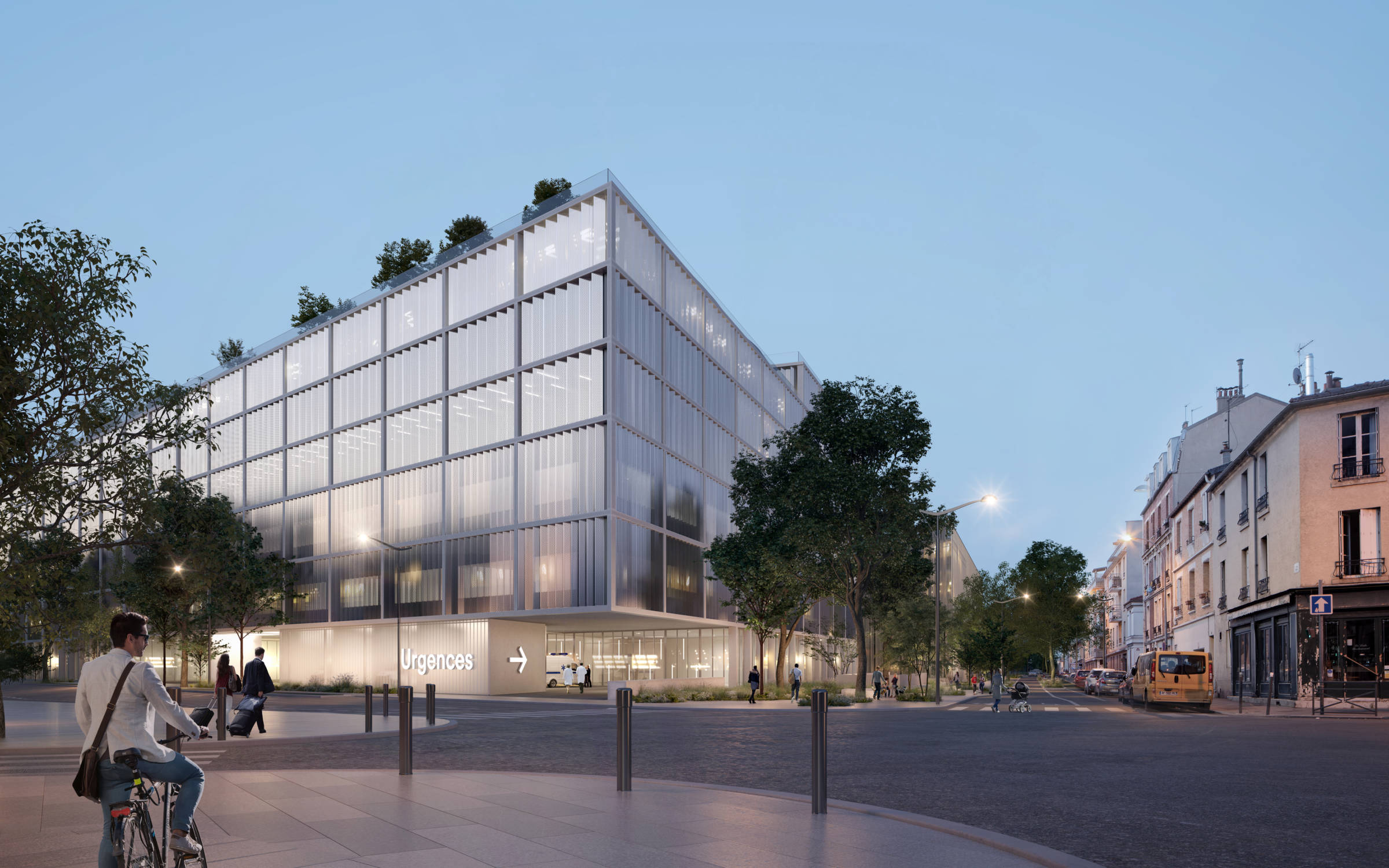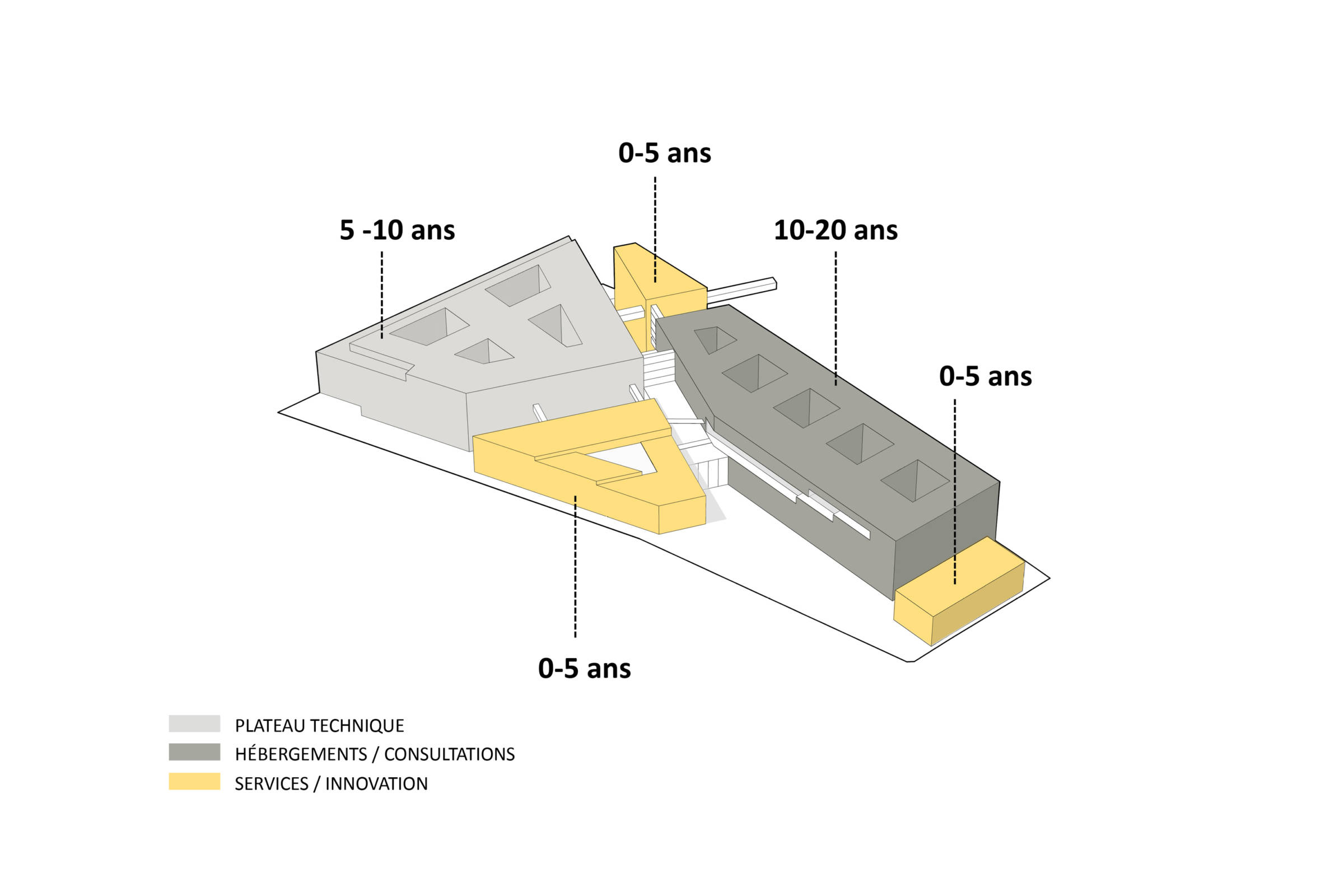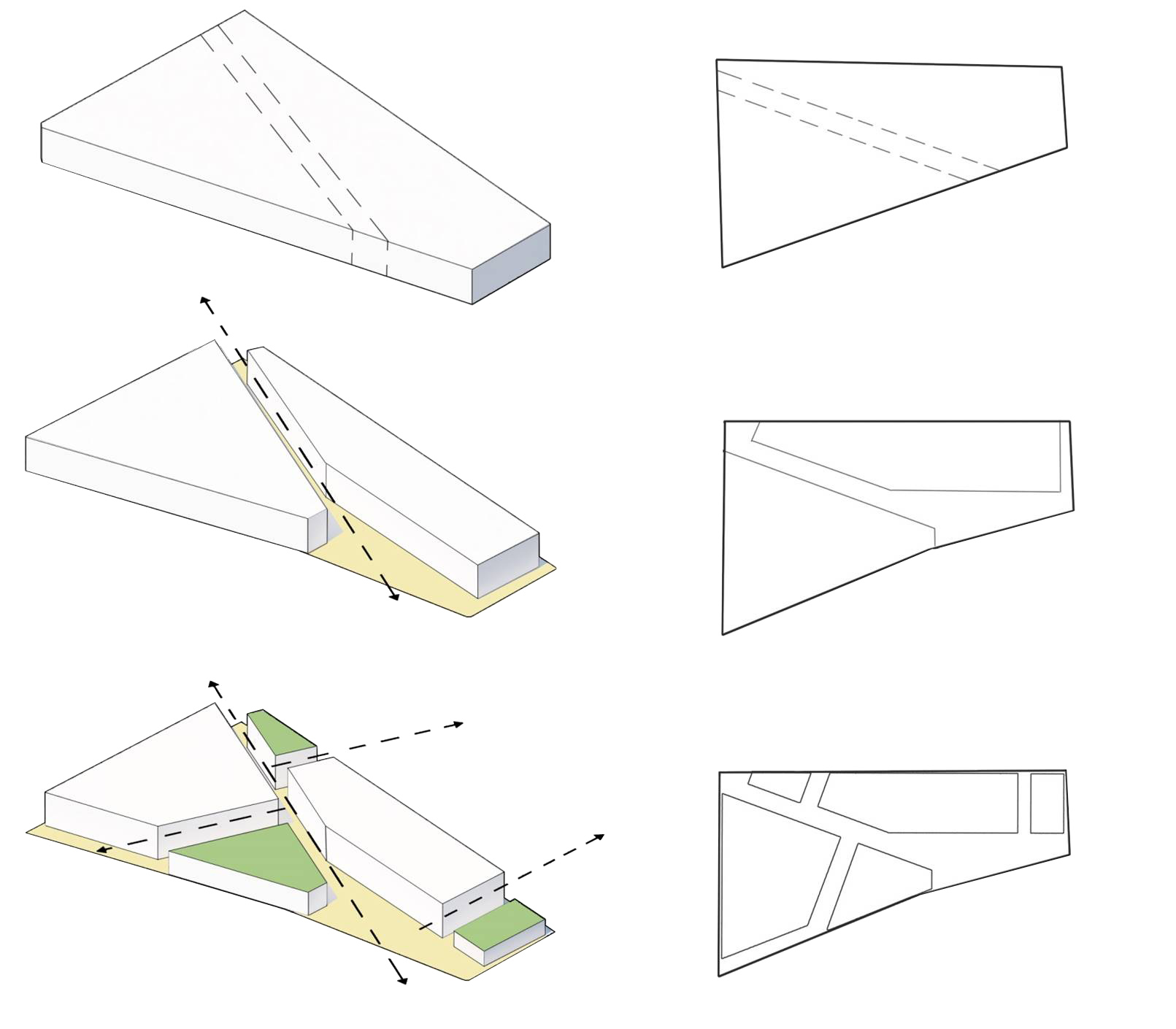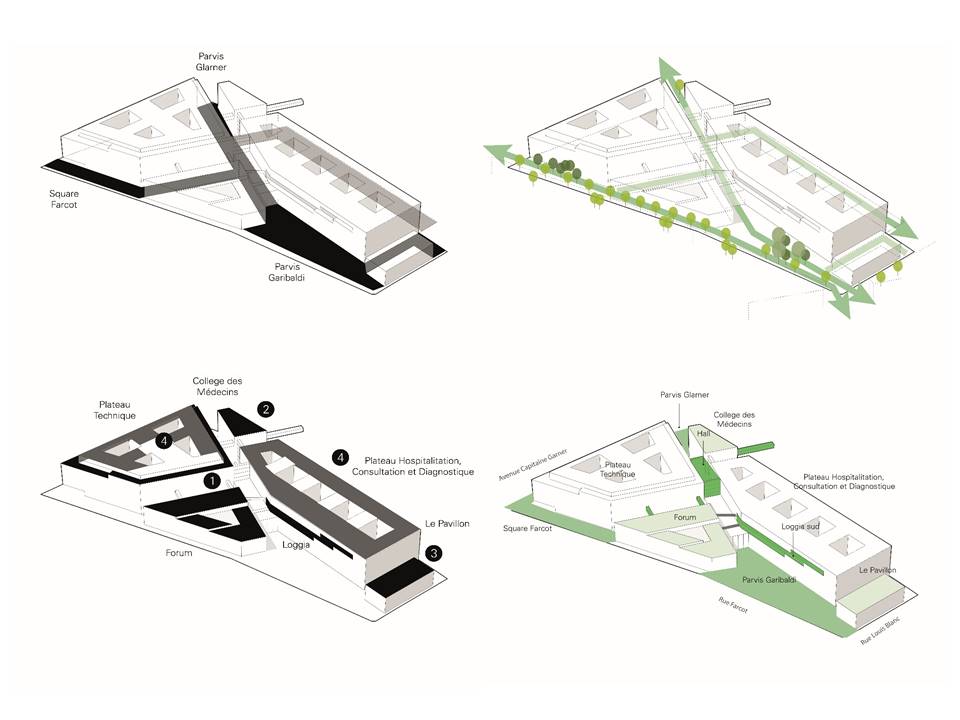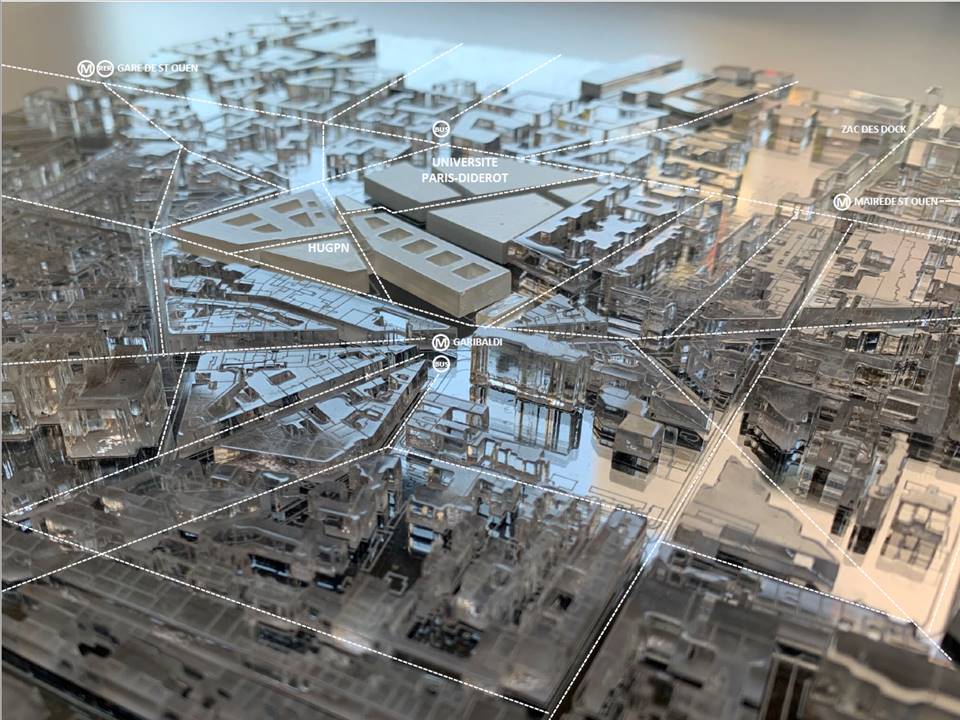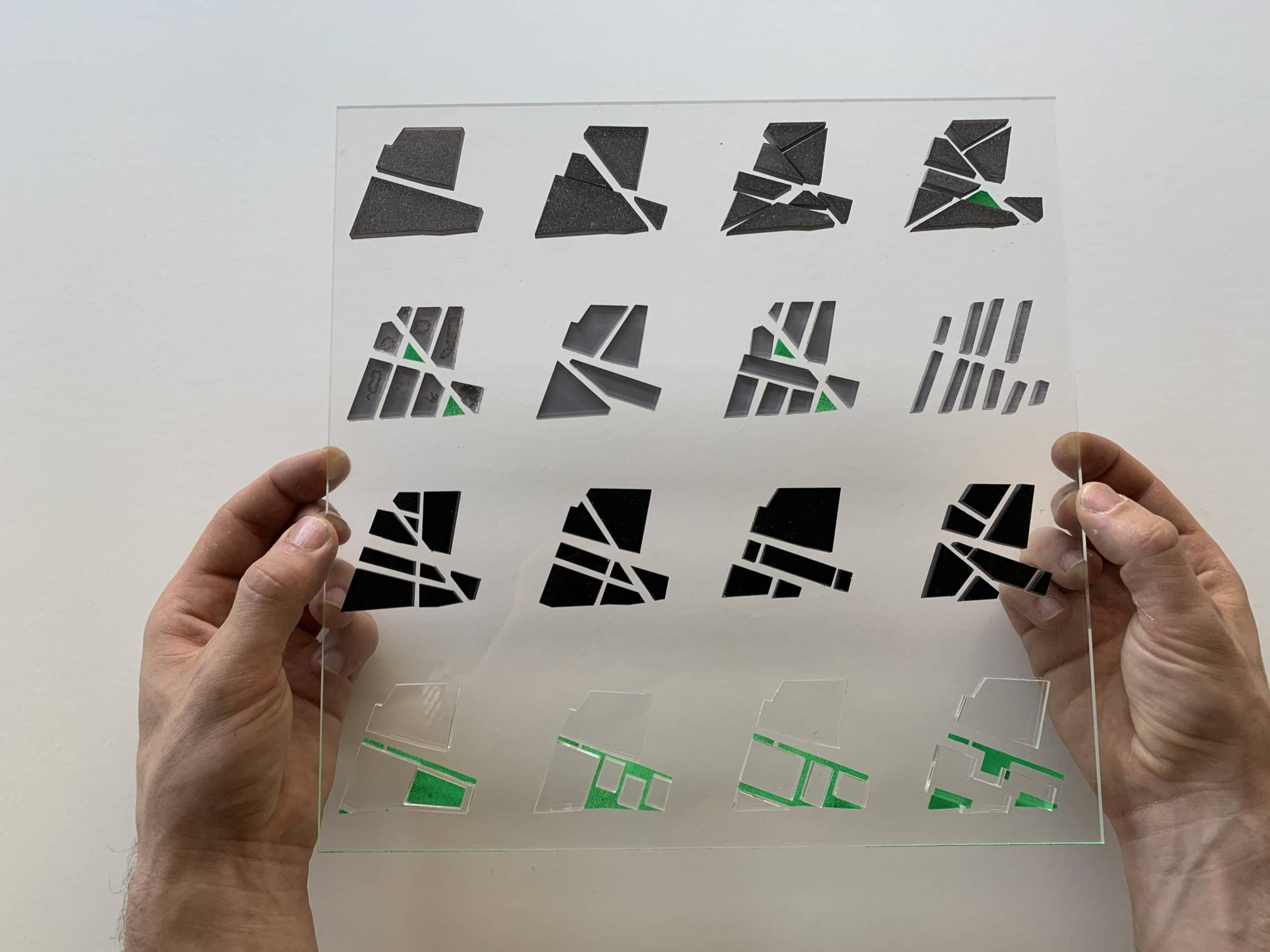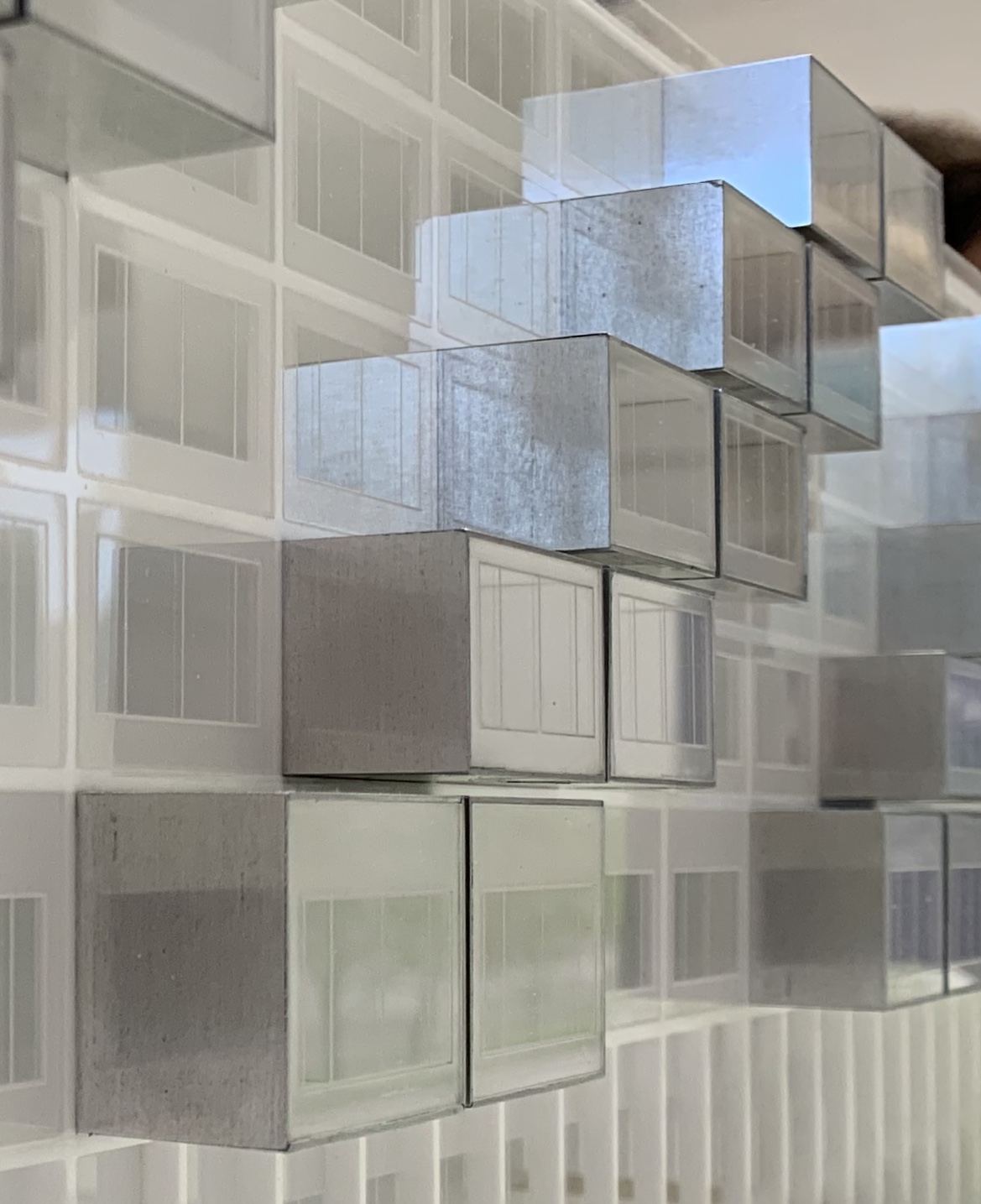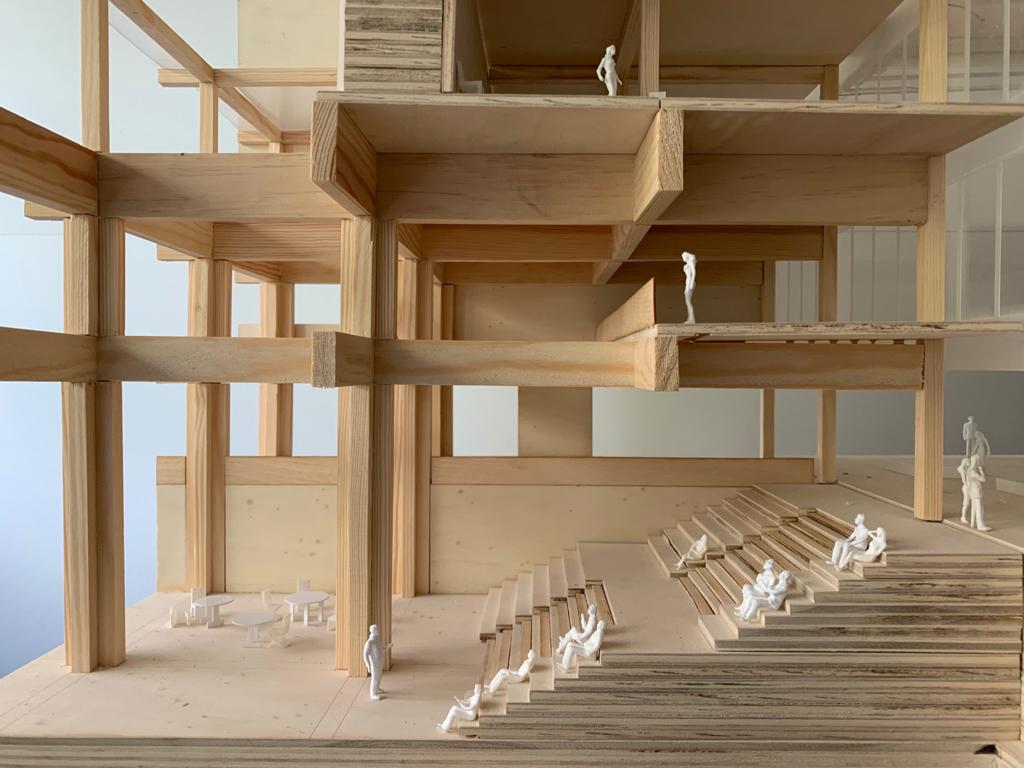Ecosystems
As the first major post-Covid hospital in Paris, HUGPN will have a responsibility to contribute to the world of tomorrow. The pandemic will undoubtedly call for changes in our cities, our living and working spaces, and our healthcare facilities. Coping will require adaptation, and HUGPN will be a demonstrator of the resilience of buildings and organisations. It will be the embodiment of healthcare redefined around shared values and giving back an essential place to people. HUGPN will be a major urban hospital that is sustainable and can be reprogrammed to respond to crises as well as to keep pace with the constant evolution of medical practices. Built in Saint-Ouen, on a site undergoing major change and at the heart of new urban densities, HUGPN will be a major resource for Greater Paris and the Ile-de-France region.
A new urban condition
A precursor of a new urbanity, HUGPN is organised into connected blocks that establish a fruitful relationship between the hospital and the city. The hospital is open to a mix of uses and services. It forges links with the city’s medical services, the University and the neighbourhood, thanks to the reconfigurable and shared spaces of the three innovative buildings, the College of Physicians, the Forum and the Pavilion. It restores generous public spaces on its fringes, Parvis Garibaldi and Square Farcot, and creates new links with the University. It also prefigures relations with future developments to the north of the site by facilitating multiple links between them. The public space extends into the hospital thanks to the belvedere gardens and suspended galleries, which offer added value in terms of uses and biodiversity. With a density equivalent to that of a suburban hospital, HUGPN thus rediscovers the virtues of a reasoned balance between the built environment and the landscape.
Ecology and quality of life
With more than 30% wood used in the construction and 50% accessible, green outdoor spaces, HUGPN achieves exemplary environmental performance in terms of its carbon footprint (objective C1). It combines ecology and quality of life: quality of life for staff, with warm living spaces close to treatment areas and work spaces opening onto loggias or terraces overlooking the city; quality of reception for patients, with landmark areas and pleasant, therapeutic gardens accessible to all. The quality of the working and relaxation areas dedicated to carers encourages new relationships between professionals, as well as between patients and carers. All these areas establish a new relationship with the hospital, the city and care. Ecology takes on a sensitive, unifying dimension in the care project.
Life cycles
Designed to last a hundred years, HUGPN is an ecosystem of five cooperating buildings that can evolve according to the cycles specific to each need: the Technical Centre, the Hospitalisation and Diagnostic Centre, the Forum, the College of Physicians and the Pavilion. The first two are robust structures with a high degree of internal adaptability, while the last three are agile wooden structures that can be easily reconfigured or converted. Each building is adapted – by its location, its structure, its technical irrigation – to the programme it is hosting, while at the same time being able to evolve within itself, expand or retract. Their distribution is concentrated on the facade around the Forum, the green heart of the project, so as to preserve open areas that can easily be reconfigured. This organisation means that they can be built simultaneously or in phases, and can evolve over the short and long term. Their independence facilitates their transformation with reduced impact on the Hospital’s activities. Their management is optimised and secure in terms of investment, maintenance and risk management.
Scalable and reprogrammable design
HUGPN is a resource building for medical practices that are constantly evolving. The organisation of its care sectors is deployed efficiently in the ecosystem of five cooperating buildings. HUGPN can adapt to crises without any impact on its programmed activity, thanks to the anticipated separation of flows and the gradual mutability of its care areas (capacity to extend critical care into ambulatory care and a duplex technical platform). It also offers the capacity to significantly increase the number of beds (from +96 to +296 beds) thanks to two complementary levers: the addition of extra units (from 3 to 6) and beds within the units. The ‘Plug&Play’ facade of the Hospitalisation Centre allows rooms to be extended (to double the number of beds, or to be converted into rooms with an airlock or accommodation for staff) and the railway line to be crossed at all points without impacting on structures and functions.
Excellence and innovation
HUGPN embodies excellence in healthcare and research, and is a showcase for the French university hospital model. It is a demonstrator of organisational and medical innovation. The Collège des Médecins is the emblematic embodiment of this, located between the Technical Centre, the Hospital Centre and the University. With its Physician-Researcher Forum directly linked to the campus, it is a vector of image and interaction, helping to attract teams and encourage their commitment to the triptych of Care – Teaching – Research. The hospital network, architecture and digital technology complement each other at every level to create an enhanced ecosystem: hospital outside the walls, telemedicine, digital ergonomics, interaction design, etc. The combination of design and technology is restoring the human element and foreshadowing the medicine of tomorrow.
Team
Directors
Antoine Buisseret, Franck Lavigne, Géraldine Maurice, Caroline Paul
Team
Colin Lefèvre, Céline Chambost, Ralph Abdeljalil, Annie Kechichian, Clémence Goudal, Adrien Jacques Le Seigneur, Geneviève Carini, Hélène Bottarel
